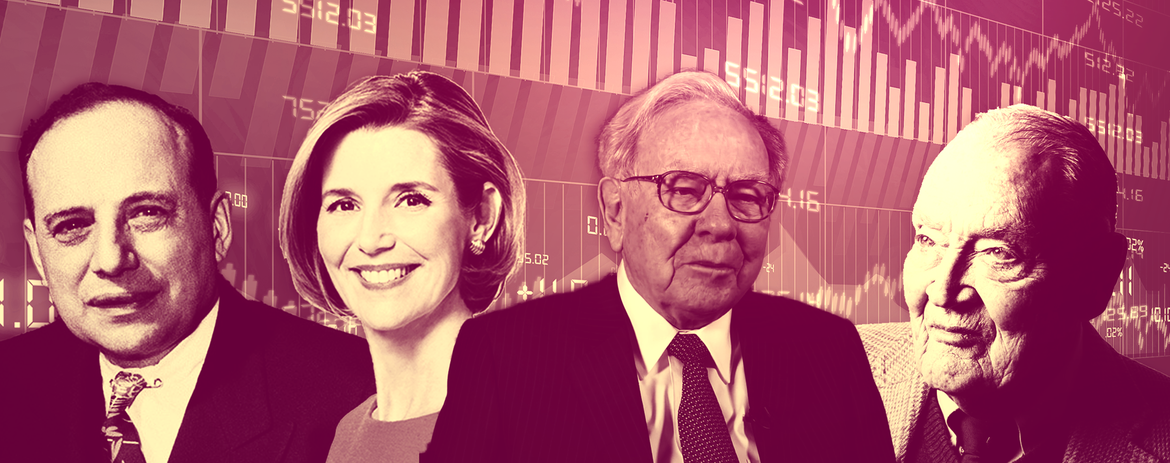How to Win at Investing Like Buffett, Bogle and Other Greats
Ever stepped up to the plate and pointed out to the (imaginary) bleachers like Babe Ruth before you swung? Or dribbled down the court with your tongue hanging out like Mike? Nevermind you were just playing in your company’s softball league or in a neighborhood pickup game. At every level of sport, you’ll find players imitating the greats.
As it turns out, mimicking the pros is a pretty great idea when it comes to investing, too. (And there’s less risk of looking silly.) Check out the styles of these four investing masters. You may not end up quite as wealthy, but following their lead can help you grow your own modest fortune.
John Bogle: Keep It Simple
Vanguard Group (the world’s largest mutual fund company) founder John Bogle’s style couldn’t be simpler: Stick with index funds, avoid expensive fees and diversify with a suitable mix of stocks and bonds.
The beauty of his strategy is that it limits the effects of inevitable human behavior. Tracking indexes lets you sit back and enjoy the slow but steady march up that markets have historically followed—without veering off course because of fear, greed or other natural emotions that can lead investors astray. “People believe there’s a pot of gold at the end of the rainbow,” Bogle told us last year. “There’s no pot of gold. And there’s no rainbow. If you can just avoid stupid mistakes, you’ll do very well.”
Warren Buffett: Buy and Hold
You don’t become one of the wealthiest people in the world by being wishy washy. Like Bogle, Warren Buffett knows the best investing move is to make none at all. Committing to a well-planned strategy for the long term helps you ride the market upward, no matter what bumps you encounter along the way.
That’s why Buffett’s style is to buy and hold. “Our favorite holding period is forever,” he wrote in a Chairman’s Letter in 1988—the point being that your investing strategy, and everything in your portfolio, should be solid enough to endure the market’s natural fluctuations. That way, you’ll only feel compelled to sell when the time is right for you.
Sallie Krawcheck: Stick With It
Sallie Krawcheck hasn’t just endured the Boys Club of Wall Street (through C-suite positions at Smith Barney, Citigroup and Bank of America), she’s mastered it. So what sage advice can she offer from her breadth of experience? “Investing is not a goal in and of itself,” Krawcheck said. “It is instead a means to an end. And that end is to build full, interesting, awesome lives for ourselves.”
Basically, don’t focus on trying to beat the market. (That’s often a losing proposition.) Remember the reason to invest isn’t just to make money, but to achieve financial goals, whether that’s paying for college, buying a home or retiring. So don’t get distracted by daily market fluctuations. Just focus on your goals and your plan for reaching them—and stick with it.
Benjamin Graham: Be a Bargain Hunter
Warren Buffett counts Benjamin Graham as one of his greatest teachers and credits him with his success. Do you need any other reason to heed his advice?
If you want a deeper dive into Graham’s investing style, read his book, “The Intelligent Investor.” Cliff’s notes version: Buy low. Dubbed the “father of value investing,” Graham is the champion of finding investments that are selling well below fair market value.
How does that apply to the majority of us, who should stick with investing in well-diversified funds over individual stocks? Remember, the market can be sensitive, and anything from underwhelming earnings reports to political news can cause a short-term dip. But we can come out ahead if we think of these events as opportunities not to panic sell, but to invest more while stocks are essentially on sale.
